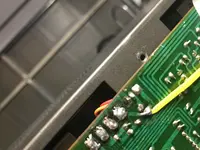A
Abominable ID
New member
Hey all,
Just bought a deck that has seen better days, but seems to function completely. I would like to restore it to the best of my ability. After scanning ebay for hours, it seemed to me that many of the deck parts and housing pieces for the models (32, 34, 38) might be identical. Is this true? What about the reel motors? Obviously not the tape heads and channel oriented systems. My machine is missing a fair amount of the housing screws and also the tape head and counter faceplate. For example; would the feet of a 32 fit on a 38? Thanks in advance.
-Ash
Just bought a deck that has seen better days, but seems to function completely. I would like to restore it to the best of my ability. After scanning ebay for hours, it seemed to me that many of the deck parts and housing pieces for the models (32, 34, 38) might be identical. Is this true? What about the reel motors? Obviously not the tape heads and channel oriented systems. My machine is missing a fair amount of the housing screws and also the tape head and counter faceplate. For example; would the feet of a 32 fit on a 38? Thanks in advance.
-Ash


